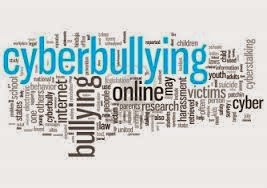Budget crisis recently hit Louisiana in the tune of $1.6 billion dollars with $300 million projected to be taken out of higher education (
1). Lawmakers are struggling to determine which actions they can take that will lessen the burden and avoid painful cuts to educational quality. The methods they choose will likely be watched closely by other legislative bodies who are struggling with some of their own budget issues.
Ideas can be good or bad depending on its impact. In the complex higher education system not every idea works well in isolation. There are multiple factors that come to play in the complex web of political, financial, and market oriented aspects of higher education. Sometimes it is better to use multiple methods to approach a problem and adjust thereafter when needed.
Considered three ideas proposed (
2):
Tax Exemptions: One of the proposals is to remove tax exemptions for business. In the short run it will likely work but many business come to rely on those tax exemptions and new businesses will consider these exemptions when deciding a location to start a business. he end result could be loss of business to other states and cities.
What could work better is adjusting tax exemptions to support higher education. Instead of removing them to shift short term money to colleges it may be a more comprehensive solution to switch tax exemptions to those organizations that support higher education in some way; or some variation of reducing and shifting tax exemptions. It would help businesses that hire graduates, collaborate in research, provide services, or in some other way encourage a self-sustaining educational system.
How might this help higher education? As companies receive exemptions they will factor these ideas into their investment decisions. Investment decisions related to higher education service, products, or quality can reduce costs and better hedge the advantages of having universities in the area in the first place. It is not an immediate solution but it will strength the university system to be more competitive in the future.
Variable Price Per Program: In this method it is hoped that by allowing the free market to work those programs that have worth more can charge a higher price than those that don't. Medical programs, engineering, or any other high value degree can charge more to attend and therefore reduce the reliance on state aid.
The problem with this method isn't that programs have inherently different value on the market but that programs will out price what the average person can possibly afford. Those who come from stronger financial means will be pushed into high value programs because of pay and not ability. Many of our best and brightest will be left behind and blocked by social class.
Moreover, if programs can go up in value they should also go down in value. Maybe that is appropriate. I would hate to have less poets, philosophers, and artists in society only because their programs aren't worth anything on the market but that may be life. Maybe some of these art programs shouldn't be charging the amount of money they do but that is a broader question.
Private Contractors for University Service: Privatization is a popular method of lowering costs. Expenses associated with unionized positions that have high pay and great benefits can eat up budgets. Privatization offers an opportunity to lower those costs by transferring the jobs to a private contractor that can specialize in certain competencies with lower costs; albeit with lower wages.
Outsourcing is helpful in balancing budgets but is likely to create a lot of anger and seen as a direct attack on unions. Ultimately, without some type of change it is likely closing of programs, lay offs, and other adjustments will be made. Vested interests won't be excited about loosing even more government paid positions.
There are only a few short term solutions and all have to do with draconian cuts. It can be extremely difficult to cut so deep and quick. One of the best ways to avoid unnecessarily damaging one facet of higher education is to do a combination of a number of methods but at much less intensity. Instead of trying to take too much from one area, such as outsourcing, it may be possible to spread it around creating more of a collective adjustment.
Another solution is to adjust the higher education model to ensure that universities become more sustainable by finding new uses for facilities, starting online programs, and adjusting strategies find ways to save and earn money. It is much better to start applying the financial screws to force change now versus having a larger collapse down the road.

